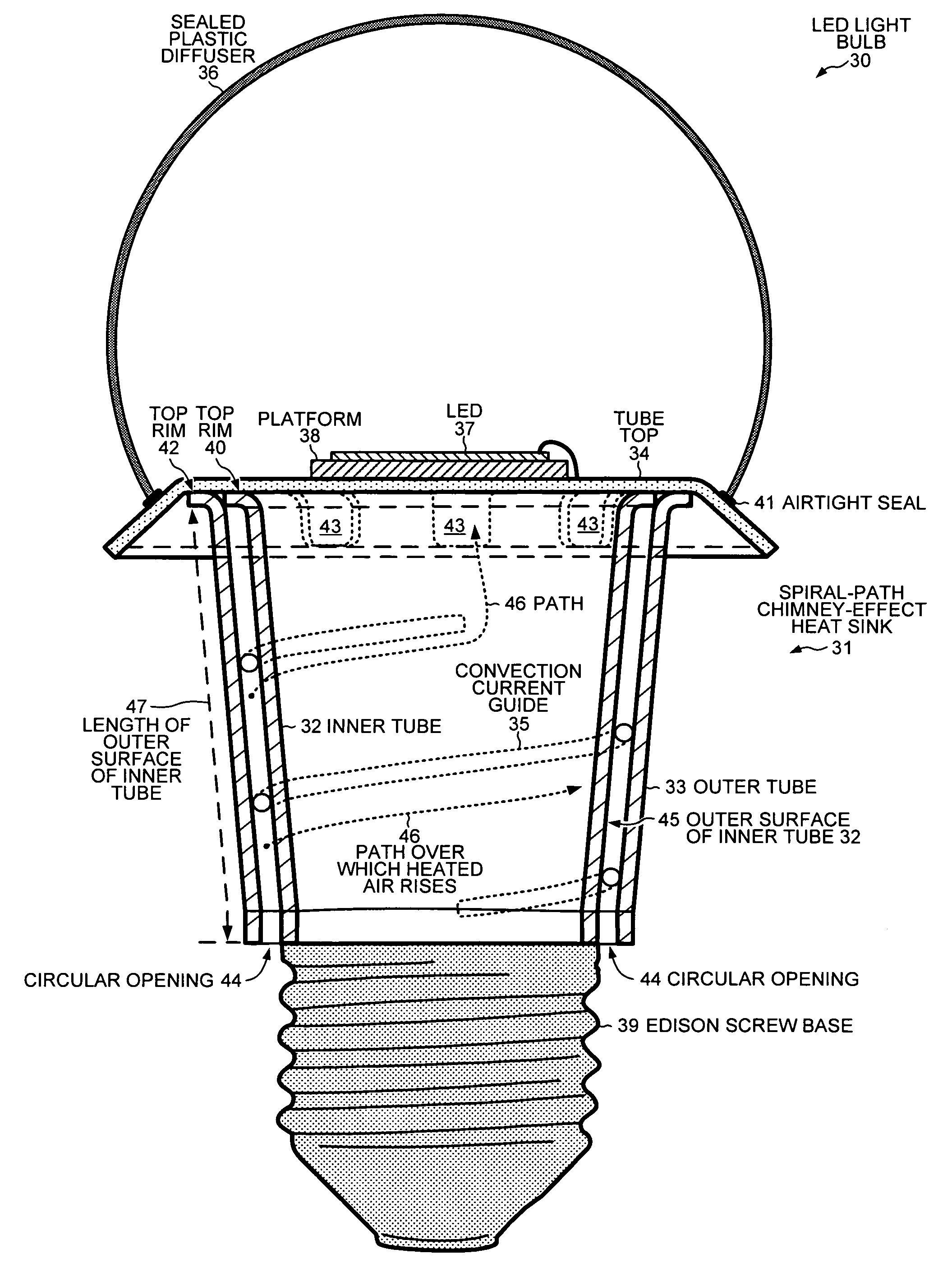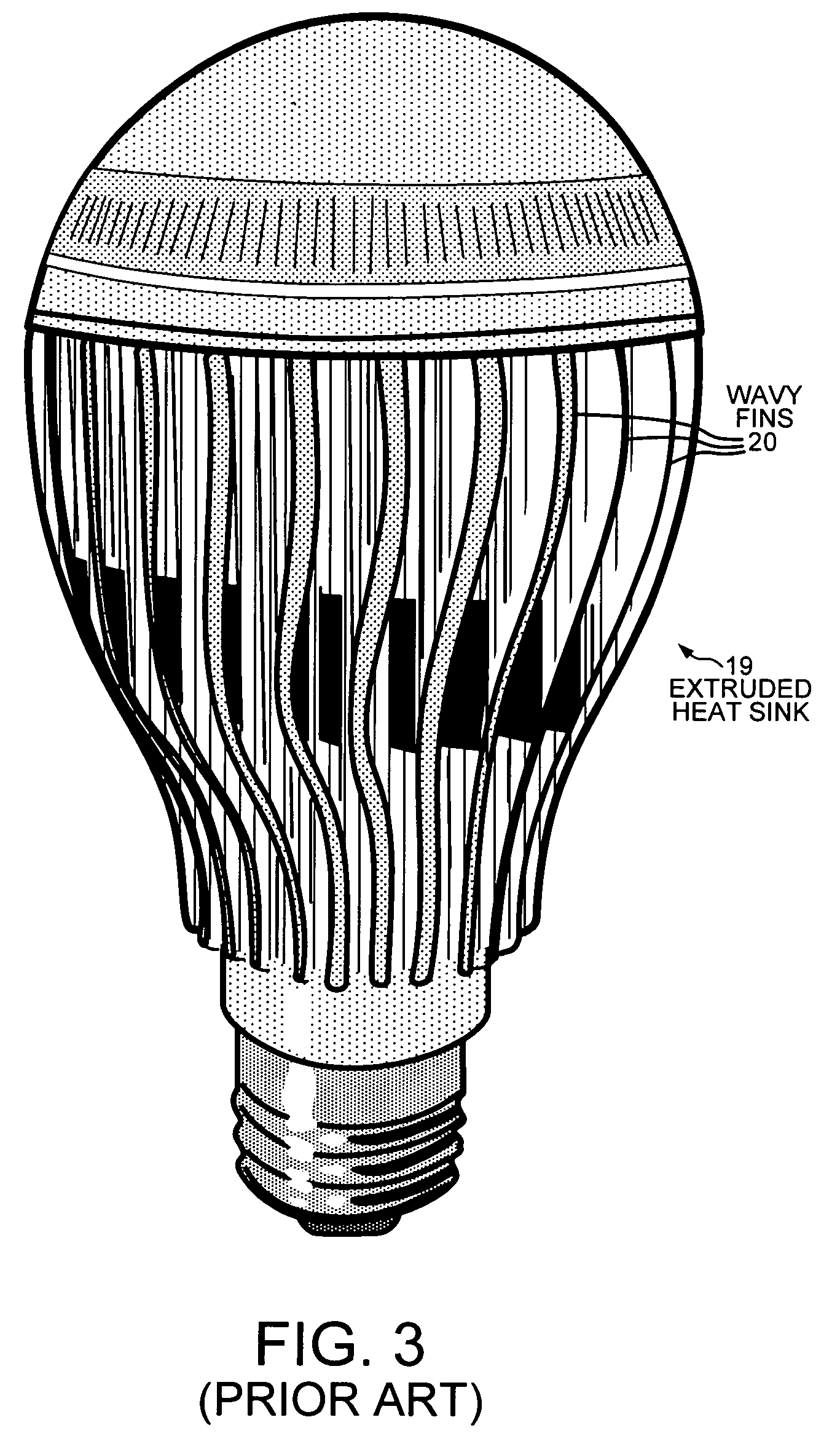Spiral-path chimney-effect heat sink
a technology of chimney effect and heat sink, which is applied in the direction of point-like light source, semiconductor device of light source, light and heating apparatus, etc., can solve the problems of large heat emission, inability to form hollow areas in the interior of extruded products, and inability to form hollow areas, etc., to achieve the effect of increasing the length of the path
- Summary
- Abstract
- Description
- Claims
- Application Information
AI Technical Summary
Benefits of technology
Problems solved by technology
Method used
Image
Examples
Embodiment Construction
[0036]Reference will now be made in detail to some embodiments of the invention, examples of which are illustrated in the accompanying drawings.
[0037]FIG. 4 is a cross sectional diagram of an LED light bulb 30 with a spiral-path chimney-effect heat sink 31. Heat sink 31 has an inner tube 32, an outer tube 33, a tube top 34 and a convection current guide 35. Inner tube 32 and outer tube 33 are coaxial, and convection current guide 35 is disposed between inner tube 32 and outer tube 33. LED light bulb 30 has the form factor of a conventional incandescent bulb. Even through no vacuum is maintained around a glowing filament, a sealed plastic diffuser 36 has the shape of a bulb and is attached to tube top 34. Instead of maintaining a vacuum, sealed plastic diffuser 36 performs the function of diffusing the light emitted from a light emitting diode (LED) 37 that is attached on top of tube top 34. LED 37 is attached to tube top 34 via a platform 38. In one embodiment, platform 38 is made o...
PUM
| Property | Measurement | Unit |
|---|---|---|
| pressure | aaaaa | aaaaa |
| length | aaaaa | aaaaa |
| thickness | aaaaa | aaaaa |
Abstract
Description
Claims
Application Information
 Login to View More
Login to View More - R&D
- Intellectual Property
- Life Sciences
- Materials
- Tech Scout
- Unparalleled Data Quality
- Higher Quality Content
- 60% Fewer Hallucinations
Browse by: Latest US Patents, China's latest patents, Technical Efficacy Thesaurus, Application Domain, Technology Topic, Popular Technical Reports.
© 2025 PatSnap. All rights reserved.Legal|Privacy policy|Modern Slavery Act Transparency Statement|Sitemap|About US| Contact US: help@patsnap.com



